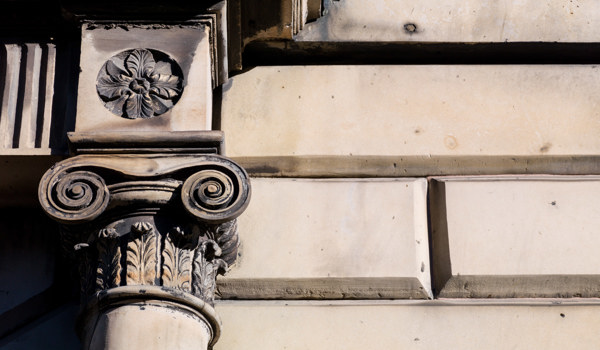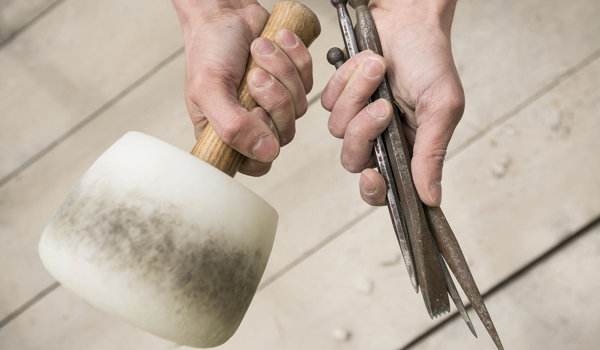How to repoint ashlar masonry
Raking out
Raking out
Care must be taken, and suitable tools used, to avoid damage when preparing ashlar masonry for repointing.
Decayed mortar can be raked out by either:
- carefully picking it out with a thin steel hook
- easing out the old material by inserting a handheld hacksaw blade into the joint and pulling gently
Power tools shouldn’t normally be used to cut out decayed or loose mortar from the fine joints as they may damage the stone. Oscillating mechanical tools can yield good results in the hands of highly skilled operatives, however. But rotary tools such as angle grinders should never be used.
Even hand tools such as chisels can cause damage if not used properly or if too wide to provide the precision that’s needed.
Raked out areas should be flushed out with water so that any last bits of loose and decayed mortar are washed down and off the wall face. Traces of dust and debris can stop the new mortar bonding with the stone.
Removing cement mortars
Cement mortars are unsuitable for repointing ashlar and can sometimes be removed if used for pointing in the past.
A hammer and chisel may be needed to remove cement mortars, often used as superficial over-pointing. Carefully chipping away the cement will expose the lime mortar beneath. Oscillating mechanical tools may be used, but never rotary tools such as angle grinders. Avoid damaging the edges of underlying stones.
You must weigh up the pros and cons of removing cement pointing that is still sound or which resists removal. To prevent damage, the best option may be to leave sound existing cement mortar in place and accept how it looks.
Regularly inspect any cement mortar to check if it has started to cause damage to the masonry. Removing it at this stage may be better for the wall’s well-being even if some damage is caused in the process.
- Previous
-
Preparation for repointing
- Next
-
Mortar preparation





